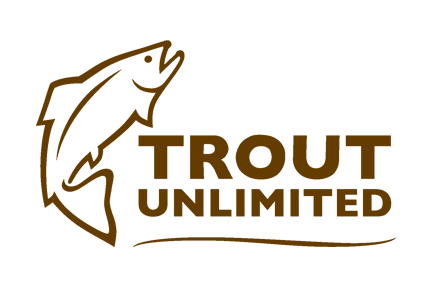Guide to Fishing The Stonycreek River
THE RIVER
The Stonycreek River originates at Pious Spring in Berlin, Somerset County and ends at the convergence with the Little Conemaugh River at the point in Johnstown, Cambria County. The information presented herein pertains to the angling opportunities that exist in the first 15 to 20 miles of the upper river, primarily that portion of the river which lies south of U.S. Route 30 in Somerset County.
This region encompasses the area known as the upper gorge which all told contains approximately six miles or remote, rugged but beautiful and fishable freestone trout water. The upper Stonycreek has been stocked with catchable size trout consistently since 1983 by the PA Fish and Boat Commission along with assistance from various area sportsmen's groups. The upper gorge from Glessner's Bridge downstream is now managed under the fingerling stocking program exclusively. The combination or regulation size fish and fingerlings stockings in addition to an ever increasing food base provide year round fishing opportunities for hold over brook, brown and rainbow trout.
ACCESS
The ability to access the river is limited especially through the most productive sections of the upper gorge. Access to the river lies from the village of Shanksville upstream where roads parallel most of the water. Just downstream of Shanksville lies Glessner's Covered Bridge Road. This is the access point at the beginning of the upper gorge. The next access, lying several miles downstream is a walk in only point along Highland Tank Road, marked by a fishermen welcome sign. Approximately three miles downstream lies a bridge at Mostoller near the village of Kimmelton. The final point of entry can be found at the Stoystown Lions Community Park just off Route 30 at Stoystown.
EQUIPMENT
Standard bait casting and spin cast rods of light to medium action function well on the river. Fly rods should be from seven to nine feet long in the four to six weight category. Hip boots are the normal wading gear, however, during periods of high water chest waders can be useful. Regardless, felt soled boots or wading shoes are a must. In addition, a wading staff is also highly recommended because of the very slippery and jagged rocks which line the stream bottom.
SEASONS
January to April - High water often predominates during this time. Worms, minnows or salmon eggs fished slowly on the bottom is a requirement. There are few insect hatches at this time and the flyrodder must be content with throwing woolly buggers, streamers and large nymphs with enough weight to get them to the bottom.
May to June - This is prime time on the Stonycreek. Small standard spinners and lures produce well for the spin fisherman. However, this is truly the time for the fly angler to be on the water. Various types of caddis flies in the 14 to 18 size range emerge with frequency. A fine hatch of Light Cahill mayflies also emerges during the first two weeks in June. Golden Stoneflies, as well as larger stoneflies similar to salmon fly of the western U.S., emerge in force. Fishing a dead drifted size 6 to 10 brown or olive colored can produce a memorable day on the river.
July to December - Throughout late summer and into autumn low water conditions often predominate. However, this is also the time during which the river receives the least pressure from anglers. Consequently, as long a bait, lure or fly is presented without spooking the fish, this time of year can be most productive. Bait and lure fisherman should use the lightest pound test possible and the flyrodder should utilize long fine leaders and long casts in order to find success.
CATCH AND RELEASE
Although no special creel limits or no kill regulations exist on the Stoneycreek, Trout Unlimited as well as many who fish and reside along the river strongly support the concept of catch and release angling. The Stonycreek provides a unique opportunity to enjoy a wilderness setting and angling opportunities to fish for hold over and maturing fish, as opposed to less pristine areas that are stocked for put and take purposes only. Trout Unlimited asks you to treat the river and its fish with the respect that they deserve so that future generations of anglers can enjoy a quality angling experience.
PRIVATE PROPERTY
There is essentially no public land along the Stonycreek River. All property on both banks is owned privately and some areas are marked - No Trespassing. Please exercise caution and consideration when planning a trip up river. Remember to ask permission to cross any property that you are unsure about. Access to the river is made possible by generous and considerate property owners. Access to the river should be considered a privilege and not a right.
TROUT UNLIMITED
The Mountain Laurel Chapter of Trout Unlimited is a Volunteer group working to preserve the cold water resources in Cambria, Somerset and Bedford counties. Membership meetings are held on the second Tuesday of the month at 7:00 p.m. at the Richland Fire Hall. Meetings are open to the public. Trout Unlimited supports and works with the Stonycreek- Conemaugh River Improvement Project (SCRIP). The 16 member volunteer board of directors of SCRIP work to abate the abandoned mine drainage (AMD) in the Stonycreek and Little Conemaugh watersheds.
TO DOWNLOAD THE FULL-COLOR PDF
Click here

